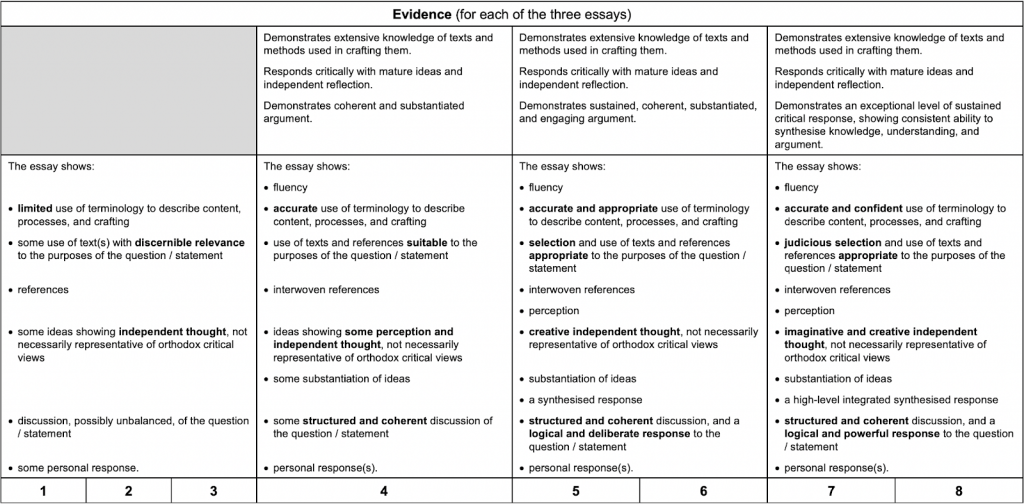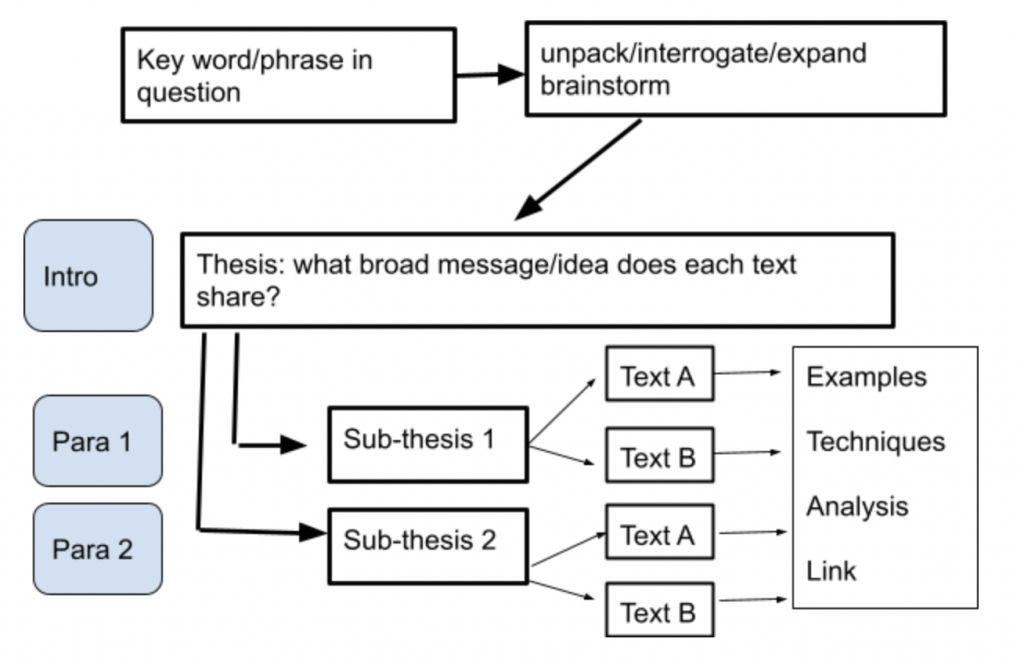Demystifying Scholarship English
–Sian Evans
The NZQA Scholarship English exam is a daunting prospect for many teachers, largely because so little is known about how it is marked. Well, I’m here to provide you with a not-at-all-endorsed-by-NZQA demystification of what your students need to be able to do to get Scholarship. Grab yourself a cuppa and sit down for a read.
The basics:
- The exam consists of three essays, each of which is marked out of 8
- Although numbers of students attaining Scholarship are closely monitored, it is still a standards-based assessment
- To gain Scholarship, a student should aim to achieve a minimum grade of 4/8 in each section, and a total of around 14/24 (for Scholarship) or 21/24 (for Outstanding).
Performance descriptors:
- The performance descriptors used in marking are published at the end of each marking round
- They do not vary substantially (or at all) from year to year
- The same descriptors or achievement criteria are used for each of the three essays. Ensure that you and your students are familiar with them.

What do the numbers mean?
- Think of the 0-8 scale as mapping onto what you already understand about the expected standard of student work at NCEA Level 3
- 0-3 would correspond to a Not Achieved, Achieved or Merit at NCEA Level 3
(student is not working at Scholarship level) - 4 is the equivalent of a strong Excellence at NCEA Level 3
(student is close to Scholarship level but not quite there in this essay. Two 5s and one 4 could get you Scholarship overall. Three 4s probably would not) - 5-6 is Scholarship level. This is higher than an E at NCEA Level 3.
- 7-8 is Outstanding Scholarship level. This is considerably higher than an E at NCEA Level 3.
What do the descriptors mean?
- Core criteria (at band 4) is similar to what we would expect for an Excellence at NCEA Level 3:
- Fluency
- Terminology
- Selection of texts and references
- Independent thought
- Structured response to the question
- Personal response
- Scholarship criteria (at band 5 and above) contains some key differentiators:
- Substantiation of ideas
- Synthesis
- Substantiation of ideas comes down to a well-structured argument. Focus on teaching students to:
- Think critically around a topic on the fly (discussion, discussion, discussion)
- Construct insightful and coherent thesis statements (drills, drills, drills)
- Synthesis comes down to essay and argument structure:
- Lead with ideas, rather than quotes or scenes or techniques
- Structure paragraphs around ideas, rather than around texts
- Core criteria (at band 4) is similar to what we would expect for an Excellence at NCEA Level 3:
Below is a visual I use to teach my students to construct a synthesised Section A essay, that is framed around ideas rather than around the texts:

Sian Evans may or may not have anything to do with the Scholarship exam at a national level and wouldn’t tell you if she did. Twenty of her students entered the Scholarship exam last year, and thirteen of them passed it.
A fabulous resource to support your scholarship teaching is Into the Woods. This textbook is intended to empower teachers and students to approach texts in different ways in the classroom.



